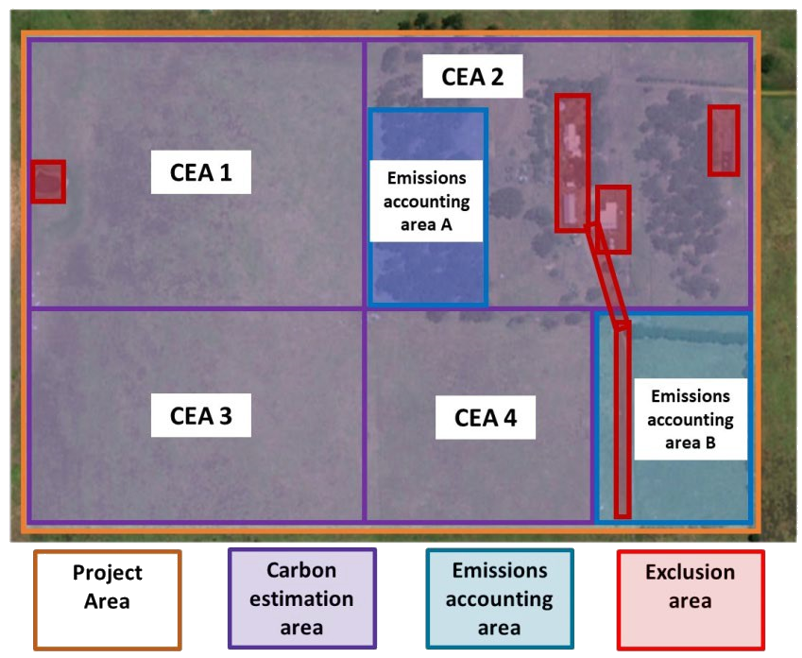Understand the Options and Alternatives for Selling a Property with a Registered Carbon Farming Project Onsite
Carbon farming can be just like life in the real world. Plans might not always align perfectly, or new opportunities might show up on the horizon. In this article, we’ll explore the different pathways available to you when it comes to selling your carbon farm. We’ll get into the implications that a registered carbon project may have on property prices and the ease of sale, ensuring you’re equipped with the knowledge to make informed decisions. For those considering embarking on a carbon project journey, we’ll touch on some of the intricacies of each scenario, as well as some of the risks involved. Before we dive into the fascinating realm of consolidating or diversifying carbon project areas, it’s important to provide a quick disclaimer. This blog post offers general guidance on the subject, but keep in mind that it’s not a one-size-fits-all solution. We strongly encourage you to reach out to us directly so that we can have a personalised conversation tailored to your specific situation. Our expertise and insights will help you determine the approach that best suits your needs.
Before we begin: CEAs
When we talk about the sale of land and carbon projects, we’ll be bringing up the idea of a “carbon estimation area” (CEA) quite a bit. Every carbon farming project is constituted of one or more CEAs, and each CEA will feature a single carbon farming methodology. ACCUs are calculated for every individual CEA that is part of a carbon project.

Example of project mapping (Source: 2021 Soil Carbon Methodology)
CEAs are important to the process of selling a carbon farm – a whole carbon project might consist of multiple CEAs on a single property, or many CEAs across many different properties. Individual CEAs can also be split across multiple properties, which can further complicate what needs to happen for the land and the project to be transacted. Before starting to think about your preferences for selling your carbon farm, it is worth reviewing the design of your project area, the CEAs involved, and speaking to an expert who can advise on the different implications of certain project designs.
Thinking of selling your carbon farm?
When there are changes in personal circumstances or in the conditions in the market, it might make sense for landowners, project developers, or asset managers to consider selling land where there is an active carbon project. It’s essential to remember that owners of a carbon project have a range of options on how to proceed. Selling the carbon farm doesn’t have to mean goodbye to the project entirely. There are three pathways that can be considered when it comes time to sell up:
- Wrapping up – effectively, this is canceling the project on the land being sold. It involves revoking a Project Area and giving up any carbon credits that have been generated by the project.
- Staying on as project manager – selling up might mean letting go of the land underneath a carbon project, but you might stay involved with ongoing management rights to continue the project and accrue carbon credits.
- Transferring ownership – if the new buyer is already an active carbon project owner, they might be seeking to expand their project portfolio by adding your property and project. Or, they may not have an existing project but have no issues with taking on ownership of your property and the associated project. Both scenarios involve the transfer of ownership of the existing carbon project.
Wrapping Up – keeping things simple.
Wrapping up a carbon project area due to property sale appeals for many different reasons. A desire for simplicity might be the most easily understood. Transferring a carbon project adds complexity to the sale of a property. The seller might see greater value in selling the property without the burden of the carbon project because it means a simpler transaction, or because they believe it could potentially increase the appeal of the property on the market to a wider range of buyers. Project owners might also wish for a clean break from the responsibilities and commitments associated with continuing to manage the carbon project. After all, they’ll now have a whole new range of stakeholders to work with like the new property owner, as well as their partners and financiers, for the duration of the project’s permanence timeline.Stay on as manager of your project – in it for the long haul.
In many cases, the owners of a property may wish to stay involved as the carbon project manager following the sale of the land asset. After all the work that has gone into establishing a project, this desire might be driven by deep conviction in the potential of that project area to generate returns for both the project owner and the climate. A seller can remain involved by establishing a Carbon Right over the Project Area on the property they are looking to divest. This establishes their ongoing rights to manage the Project Area, even while the freehold title to the property is transferred to the incoming buyer. However, this decision does come with its own challenges to work through. Negotiating the terms of on-going project ownership with the new buyer and their finance partners will be essential. During the sale, arrangements must clearly specify ongoing management responsibilities, compensation, and any agreements needed to ensure a smooth transition of ownership without jeopardising the project.
Transferring ownership – from one carbon farmer to another…
With the future of carbon farming looking bright, it’s wise to assume that many buyers of a carbon farm might be existing project owners on the lookout to increase their portfolio of assets. In this case, there would be an opportunity for the seller to transfer their project to the buyer for amalgamation. Alternatively, the new buyer may be at the start of their own carbon farming journey, in which case the transfer of ownership may still be appealing. Transferring ownership involves several steps with the ERF to ensure compliance with the Carbon Farming Initiative Act 2011. While it isn’t a particularly difficult process, there are a few important factors to consider:
- From a restructuring perspective, you are only ever able to transfer a project area between two registered carbon projects. This means that the new owner will need to have an existing project, or register a new project to facilitate the transfer, a step which will take time and expertise.
- Transfer of ownership can have implications for the permanence period of the overall project;
- If the transfer of ownership requires an add area variation (or, s57 restructure) this would require a restart of the permanence period. I.e., in the event whereby ownership is transferred by the new owner establishing a project themselves – this would be considered adding an area, and the permanence should restart. Noting that credit issuance is crucial here – permanence won’t restart if the first issuance is yet to occur as the period hasn’t commenced anyway. Permanence will commence from the first issuance.
- If the transfer of ownership is simply a straight change of ownership where the project areas are unaffected, there is no adjustment to the permanence period. The new owner simply continues the permanence obligations of the previous owner.
- Meanwhile, the opposite is true for the crediting period – rather than extend the period from a fresh baseline, the new crediting period for the amalgamated project will end at whichever date is earliest: the crediting period of the project transferred to, or the project that was transferred. Buyers can expect a loss of total crediting period for either the existing or added area.
- It is important that during the sale, the transfer includes the project, any assets and information (including historical records) required to undertake the project, as well as all elements of legal right to conduct the project.
Find out more information directly from the Clean Energy Regulator on selling or buying a carbon project here.
What about the price?
Of course, if you’re selling a carbon farm you would be right to be concerned about numbers, and the possible positive or negative impacts that a carbon project may have on the market price of the land. Carbon farming could impact the expected price in several ways:
- Firstly, carbon farming offers an additional income stream that is not dependent on seasonal conditions or commodity prices. Given these factors can be highly variable in the agricultural industry, consistent future income from carbon credits might be appealing for some buyers or possible investors.
- Secondly, more organisations will be looking out to “inset” their carbon credits to meet net-zero targets. Acquiring land with active projects would provide an avenue for enterprises to offset their unavoidable emissions, and these factors could positively influence the price of land on the market.
- However, many potential buyers new to carbon farming might be focused on the trade-offs associated with carbon projects. These are commonly expressed as long-term commitments from landowners and limitations on land use beyond the lifespan of the project due to permanence requirements. To avoid any downward pressure on the expected price on the market, sellers would be wise to ensure their buyers are sufficiently educated about the productivity benefits of many carbon farming methodologies.
De-risking your decision to sell your carbon farm
When it comes to making a decision about what to do with your project area during a property sale, it’s worth revising the common risks associated with running a carbon farm. We’ve written about five different risks that project owners should be prepared to mitigate when setting up their carbon farming project. During the sale of a carbon farm, it would be wise to brush up on the preparation of both parties to be carbon literate and up to date on the latest changes to the regulatory environment. Timing is also an important risk to mitigate during the sale of a carbon farm – knowing that regulator processing times can take up to 90 days, it would be wise to factor in these times when deciding whether to transfer your project to another owner.
Ready to find out more?
Explore our range of educational resources in our Carbon Farming Education Hub where we frequently publish educational articles, webinars, and guidebooks.When you’re ready to explore the feasibility of undertaking a carbon project on your property, email us at [email protected] or give us a bell on (08) 6835 1140 to be connected with one of our project facilitators.


![AFN – Cert Accredited Expert [RGB] AFN - Cert Accredited Expert [RGB]](https://carbonfarming.org.au/wp-content/uploads/elementor/thumbs/AFN-Cert-Accredited-Expert-RGB-e1725255016744-qti2uogw4b9a3s6au2d1bbf4utb8ggjuwvkj4qpce8.png)